Hurricanes and Spitfires Across Three Continents - Bill McRae, Flight-Lieutenant (ret'd)
Trained as a pilot, Bill McRae flew aboard Supermarine Spitfires with Royal Air Force 132 Squadron during the Second World War, intercepting German aircraft. Mr. McRae discusses his experiences of flying Hawker Hurricanes equipped with photographic equipment in Takoradi, Ghana, and his unexpected transfer to Sierra Leone.
"Voices from the Canada Aviation and Space Museum", a new documentary film series produced by the Canada Aviation and Space Museum, in collaboration with Outsiders Films Inc., focuses the spotlight on men who have left their mark on Canada's aviation history.
Trained as a pilot, Bill McRae flew aboard Supermarine Spitfires with Royal Air Force 132 Squadron during the Second World War, intercepting German aircraft. Mr. McRae discusses his experiences of flying Hawker Hurricanes equipped with photographic equipment in Takoradi, Ghana, and his unexpected transfer to Sierra Leone.
"Voices from the Canada Aviation and Space Museum", a new documentary film series produced by the Canada Aviation and Space Museum, in collaboration with Outsiders Films Inc., focuses the spotlight on men who have left their mark on Canada's aviation history.
Transcript
Voices from the Canada Aviation and Space Museum
Interview with Bill McRae
00:00:00 (ANIMATED LOGO) OUTSIDERS FILMS
00:00:10 (TITLE) CANADA AVIATION AND SPACE MUSEUM
00:00:13 (TITLE) Hurricanes and Spitfires
Across Three Continents
00:00:22 (VOICE OVER) When the war started, I felt that I, I should be involved and, uh, the one thing that interested me, of course, was flying. I got my wings eventually on, uh, on the first of April, April Fools’ Day, which was, that was very (laughs) very fitting.
00:00:44 (TITLE) Bill McRae
Flight Lieutenant (ret'd)
00:00:46 After I graduated from the Spitfire uh, introduction class, I was sent to an RAF Squadron, one-three- two Squadron which was just then forming in Scotland and I never got out of Scotland. I was with them for eleven months and they never got out of (laughs) Scotland so we didn’t get much, much activity of the type that we’d later get down south.
00:01:14 But we were involved with uh, intercepting anything that was coming, approaching the British Isles that wasn’t, didn’t have their IFF Identity Friend or Foe radio operating and uh, I don’t know, I guess I must’ve done, oh maybe ninety or something like that of these and that was the only time I ever flew at night with Spitfires so we were flying both day and night intercepting these mostly phony uh, signals that we were getting. We never did intercept a German aircraft, although one came one day and bombed our airfield in broad daylight.
00:02:02 And then your next operations were in West Africa?
00:02:05 My next operation was I was posted to the desert air force. Got as far as Takoradi in which, on which is now Ghana, was then the Gold Coast, whereas the wing, uh, squadron leader came aboard and he said, “Are there any Spitfire pilots in this group?” Well, there was only one other fellow and myself that had flown Spitfires or at least admitted to have flown Spitfires.
00:02:30 So we stepped forward and he said, “OK, come with me, we’re getting off.” So we got off and we took, he took us out to the airfield and--where another fellow met us and he said, “Welcome to the, the defensive Takoradi flight to which you are now attached.”
00:02:47 In other words, he had simply cut in to our posting. And as a result of that, my documents went to the desert air force and since we never got there, they must’ve figured we got sunk at sea or something so they never did find my documents. My official documents in the RAF—RCAF is that I left for England on the eighth of May, 1941, and I arrived in England in May of 1943. That was the date I came back from Africa. The two in between are just non-existent (laughs)
00:03:24 (VISUALS)
00:03:31 A lot of funny things happened at Takoradi as far as I was concerned. I’d only been there a couple of days and I saw this Hurricane. We were flying Hurricanes there, not Spitfires at all. And uh, I saw this faded blue Hurricane sitting out in front of the shack and I said, “What’s that?” and they said, “Oh it’s a photo Hurricane. Would you like to fly it?” And I said, “Sure, I’ll give it a try.” So I flew the Hurricane; it still had the camera fittings in the cockpit, but it didn’t have any cameras in it. And uh, when I came back they said, “How did you like it?” and I said “Oh, it’s OK.” So, “OK, you’re now our photo pilot.” So I got all the photo jobs after that.
00:04:20 Takoradi was a place where the all of the fighters and the light bombers for the desert air force were brought in by ship, assembled, tested and then flown four thousand miles up to the desert. And, uh, for some reason or other, because I’d been a Spitfire pilot I guess, I got the job of testing any of the Spitfires that came through Takoradi, not all of them but some of them. And some of the, all of the photo ones, for some reason or other, I got to test.
00:04:54 So when the, when the invasion of North Africa took place, I was asked to go over to the other side of the runway and test a couple of photo Spits that had just come in. I test flew them, told the Squadron leader they were OK. The next day he said to me, “Take number so-and-so and fly it to...” and then he gave me the name of a field. I didn’t even know what country the field was in. I had to get a map and look it up and it was in Sierra Leone, nine hundred miles away.
00:05:30 He said, “Take it there today.” So, with a Spitfire, there was no place like, as there is in a Hurricane there's a little pocket behind the cockpit where you can put your razor and that sort of stuff. There wasn’t that on the Spitfire. What we did if we had to fly any distance, we’d take a panel off the wing, put our razor and our change of underwear or whatever in there and put the panel back on again. So I did this and took off expecting that I’d be gone for a day. And when I got to the other end in Sierra Leone, reported to the squadron there, the squadron leader said, “Welcome to the Squadron one-two-eight to which you are now attached.” I’d automatically been transferred again without any... all my papers and everything? I don’t know where they were.
00:06:17 (VISUALS)
00:06:25 Anyway, at the end of that, that was, I was there for another, about another couple of months because they took the whole bunch back to send back to England, but they said I’d been doing such a good job, I was to be kept there. So I was kept there for another month which I spent test flying and then I too managed to wiggle my way back to England. So that was pretty much my story at Takoradi.
00:06:55 (VISUALS)
00:07:07 Then I came back from, it was in May; just as I'd left Nova Scotia in May, I arrived in England now in May only two years later (laugh) and uh, I went to—when I heard that some of our group were going on to Typhoons and I didn’t want to go on a Typhoon; I’d been flying Spits now for two years off and on anyway. And I wanted to stay on Spits. So I went to Air Force Headquarters in London. We got a—we actually got a ten day leave after all of this nonsense—and I went to Air Force Headquarters in London and asked for a posting to a Canadian Spitfire squadron, which I got, which was four-oh-one Squadron, which at that time was in the Midlands on rest. So I went and joined them but there was, we were only there about two weeks when we moved south and stayed in, in uh, in the south for the rest of my tour and eventually in France.
An Interview With Bill McRae, Flight-Lieutenant (ret'd)
Canada Aviation and Space Museum
Associate Director General Stephen Quick
Project Lead Renée Racicot
Site Coordinator Johic Nicolas
Technical Support Jean-François Labrosse
Executive Assistant/Volunteer Lead Linda Dupuis
Lift Jockey Gary Sanford
Conservation Technician (Aircraft) Matt Bruce
Conservation Aircraft Specialist Lee Norris
Conservation Aircraft Specialist Corey Stephen
conservation Aircraft Specialist Mike Irvin
Photographer Richard Lawrence
Director General Anthony Smyth
Director of Operations Marc Ducharme
Manager – Conservation Sue Warren
Manager – Technical Services Bruce Malanka
Manager – Internal Communications,
New Media and Inter-Governmental Affairs David Sutin
Outsiders Films Crew
Interviewer Stephen Quick
Producer Ginette Petit
Director of Photography & Film Editing Alain Baril
Sound Recordist Marc Larouche
Makeup Artist Sara Kryszak
Music Westar Music
We would like to thank Mr. Bill McRae for allowing us access
to his personal archival collection.
We would also like to thank all the employees of the Canada
Aviation and Space Museum for their passion, dedication, and
patience during the filming of this production.
©The Canada Aviation and Space Museum – 2010
CANADA AVIATION AND SPACE MUSEUM



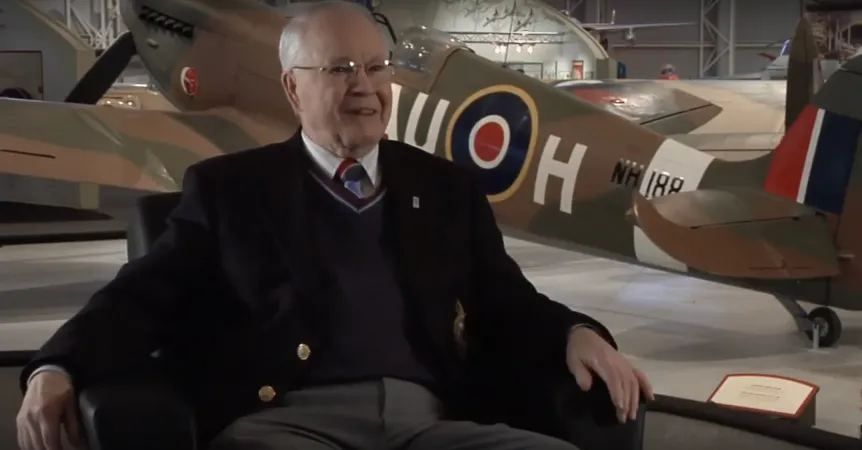

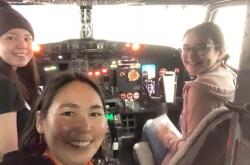
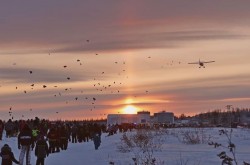

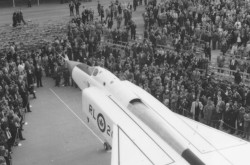
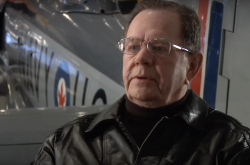




![A block of photographs showing some of the people involved in the bombing of beluga whales in the estuary and gulf of the St. Lawrence River. Anon., “La chasse aux marsouins [sic]. » Le Devoir, 15 August 1929, 6.](/sites/default/files/styles/thumbnail_7/public/2024-09/Le%20Devoir%2015%20aout%201929%20page%206.jpg?h=584f1d27&itok=TppdLItg)






